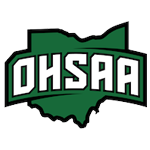THREE-PERSON BASKETBALLOFFICIATING MECHANICS
RECOMMENDED TABLESIDE COMMUNICATION
Rationale for Change: The tableside mechanic: a) puts the foul-calling official in a better position to communicate with coaches; b) may improve coaching behavior with the official nearby to explain the call, rather than the coach trying to communicate with the official across the floor; c) improves officials’ responding skills; d) speeds up the dead-ball period with the calling official moving toward the table.
General Techniques for Officials:
- Don’t walk directly to a coach; go to your new officiating position. The coach will get your attention if he/she has a question.
- Most statements by coaches don’t normally need a response. Questions get answered; statements may need some type of acknowledgement.
- Let the coach speak/ask his/her question first, before speaking. Be a responder, not an initiator.
- Most coaches will have questions/comments when they believe the officials have missed an obvious call.
- Having the officials in closer proximity often calms down the coach.
- Be in control and speak in calm, easy tones. Be aware of your body language; maintain positive and confident body language.
- Make eye contact with the coach when the situation permits.
- Do not try to answer a question from an out of control coach; deal with the behavior first.
- If you’ve missed a call or made a mistake; admit it. This technique can only be used sparingly, perhaps once a game.
- Don’t bluff your way through a call.
- Do not ignore a coach.
Specific Communication Examples:
|
Behavior/Question/Comment from Coach |
Possible Official’s Response |
|
Coach sees the play very differently than the official. |
“Coach, if that’s the way it happened/what you saw, then I must have missed it. I’ll take a closer look next time.” “Coach, I understand what you’re saying, however, on that play, I didn’t see it that way. I’ll keep an eye for it on both ends.” “Coach, I had a good look at that play and here’s what I saw [short explanation].” “Coach, I understand what you’re saying, but my angle was different than yours.” “Coach, I had a great look at that play, but I understand your question and I’ll have the crew keep an eye on it.” “Coach, I had that play all the way and made the call.” |
|
Coach believes you’re missing persistent illegal acts by the other team. |
“Ok coach, we’ll watch for that.” “Coach, we are watching for that on both ends of the court.” |
|
Coach is questioning a partner’s call. |
“Coach, that’s a good call, as a crew we have to make that call.” “We’re calling it on both ends.” “Coach, they were right there and had a great angle.” “Coach, we’re not going there, I can’t let you criticize my teammate.” “Coach, he/she had a great look, but if you have a specific question, you’ll have to ask him/her, he/she will be over here in just a minute.” |
|
Coach is very animated and gesturing. |
“Coach, I’m going to talk with you and answer your questions, but you must put your arms down/stop the gesturing.” “Coach, please put your arms down. Now, what’s your question?” |
|
Coach is raising their voice asking the question. |
“Coach, I can hear you/I’m standing right here, you don’t need to raise your voice.” Coach, I need you to stop raising your voice and just ask your question calmly.” |
|
Coach is commenting on something every time down the floor. |
“Coach, I need you to pick your spots, we can’t have a comment on every single call that is being made.” |
|
Coach has a good point and might be right. |
“You’ve got a good point and might be right about that play.” “You might be right, that’s one we’ll talk about at halftime/intermission/the next time out.” “You might be right; I may not have had the best angle on that play.” |
|
Coach is venting, make editorial comments. |
“I hear what you’re saying” “I hear what you’re saying, but we’re moving on.” |
|
Coach just won’t let it go. |
“I’ve heard enough and that’s your warning.” |








